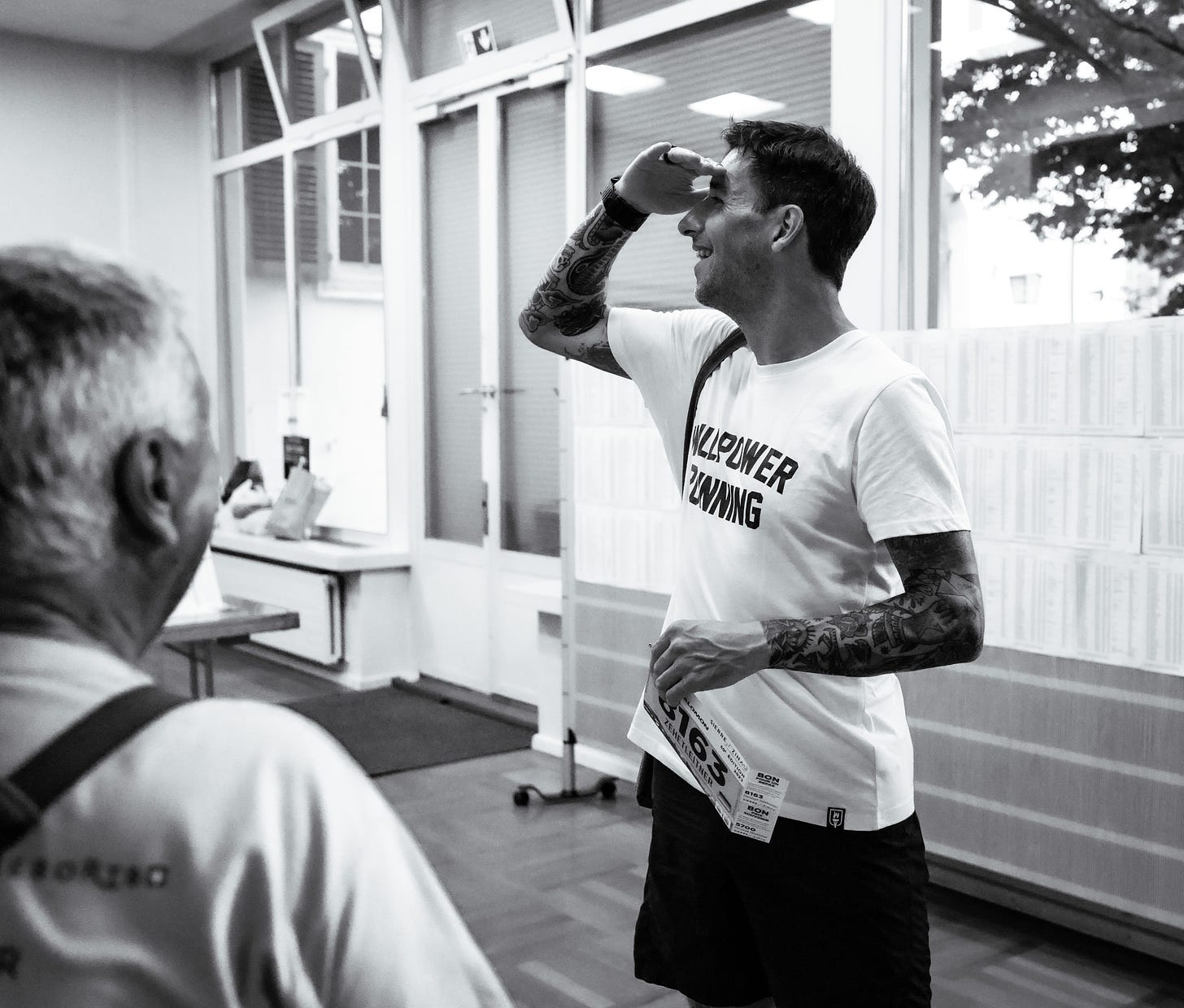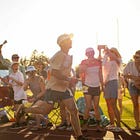Heya and welcome back to Five Things Running!
So I finally got over my stupid cold and started running again on Thursday. This coincided with my birthday, so I started being 53 years old in the best possible manner. While it’s really hard to get into running again after a month of not running, I’m hopeful that I get back into shape quickly. I sure missed running and it is so awesome to be back out there again.
Also, every time I go running on my usual route, I get reminded that I really do live in the most beautiful city in the world. What you see in the photo is the Outer Alster, which is a river, but looks like a lake and is smack right in the middle of the city. Also, it’s exactly 10 km running around it from my house. Just awesome to have such a great route at my doorsteps. It’s just not runnable on Sunday, because then it is way too crowded and it turns into a slalom course. If you’re ever in Hamburg, ping me and we run together!
Here’s this week’s Five Things Running!
A Beginner’s Guide to Trail Running
All forms of running provide cardiovascular benefits. Research also suggests that spending time in nature can help reduce anxiety and stress.
Trail running also requires you to regularly adjust your stride to handle changing terrain. This forces you to use different muscles, which can help protect against overuse injuries and may help improve balance and stability, said Jeremy Kastner, an orthopedic physical therapist and the founder of Mountain Athletes Physical Therapy in Colorado Springs.
In traditional road running, by contrast, it’s often “the same step every single time,” he said.
Oh, and here’s my quick advice: just get out of the city and run on a trail. It’s so much more fun than stopping at traffic lights all the time.
Why I’m Proud to Be an Average Runner
When I show up to a race, nobody's making predictions about my finish. There's no pressure to hit a certain time or place, not even in my age group. If I have a terrible day, no sponsors or fans are disappointed. If I skip a race entirely, the running world keeps spinning.
This might sound depressing, but it's actually liberating. I can race however I want, whenever I want, without anyone's expectations weighing me down.
Still, I have to explain to my kids that I didn’t win, again. 🤓
Longer Ultra Fueling Guidelines! (Races over 6-8 hours, up to 100 miles)
There is still a lot of conventional wisdom floating around the internet, so you’ll probably be bombarded with guidance from 2010 if you’re undertaking your first 100. “Eat quesadillas at every aid station, hydrate with water when you feel like it, sit down in chairs and have watermelon” and all the rest.
I think that the conventional wisdom is slower, and arguably not very healthy for most athletes either.
David Roche is so wonderfully transparent about his training and I learn a ton from him. Okay, admittedly, I don’t need most training tipps as I don’t plan to run 100 miles any time soon, but it is so cool to get a better understanding of how a body works (or doesn’t) during an endurance race.
What happened to Iffley Road?
Iffley Road was founded because Claire and Bill couldn’t find running clothes they actually wanted to wear. As Claire put it, “Everything was lilac and pink. Just not us.” They imagined a brand rooted in British heritage, restrained in style, and made to last, physically and aesthetically. No trends, no plastic-feeling techwear, no aspirational neon. Just good clothes, well made, for people who ran not for a leaderboard, but because it was part of who they were. They found a designer from Orlebar Brown who helped them bring their vision to life. On weekends, he’d come to their flat and work on designs. They sourced fabric from mills across Europe, often negotiating with factories that didn’t really want to deal with small brands. They launched with a small collection, used real runners as models, and sold directly through their own site and, eventually, some of the world’s best retailers; Mr Porter, Matches and Barneys New York.
Iffley Road was a really stylish running brand and when looked for them a few years ago, I was amazed when I found out that they had disappeared. Now I know why.
Why Do I Struggle to Run in the Heat?
In hot weather, our body has to split resources between powering our running muscles and keeping us cool. Blood is shunted to the skin for cooling, which means less oxygen for working muscles. Heart rate climbs to compensate, and—under typical conditions—we sweat earlier and more heavily, leading to quicker dehydration and electrolyte loss. But that’s just the physical half of the struggle.
Then there’s the pesky brain. As core temperature rises, fatigue signals are triggered earlier than usual, which makes usual paces feel unusually hard. This mental muck can drag us into a sulk spiral.
The last two days we had a nice little heat wave here and boy was I not used to running in these temperatures!
Thanks to COROS for supporting this publication!
If you want to sponsor Five Things Running and reach out to a fantastic audience of more than 2200 runners every week, please reach out!
If you missed last week’s edition, you can read it here:
Now, go running!
— Nico
🏃🏻♂️









Thanks for the mention in Five Things Running! And sorry for disappointing your kids by calling you a mediocre runner....
Happy birthday! And as always, great roundup.